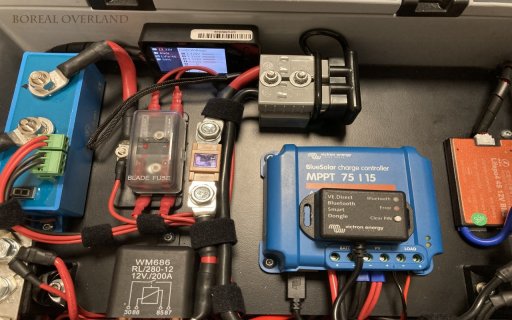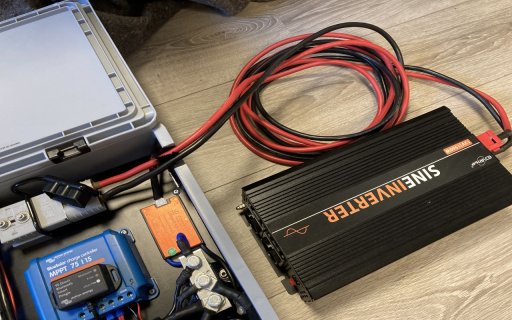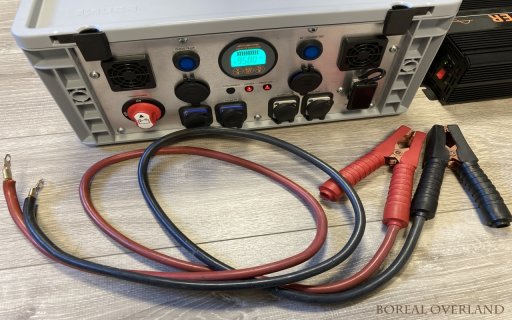Hi guys... need some advice!
Earlier this year i build myself a big Lithium 105AH battery pack:
 www.overlandbound.com
www.overlandbound.com
So far the pack is working fine.
My question is:
Can i use the 125A ANDERSON connector to hook up some fairly beefy jumper cables with an ANDERSON connector
and jump start my or any car that way..?
1. We can do this by letting the battery's be connected to each other and let the low 40AH (acid) battery balance and hopefully have a high enough voltage to start..
disconnecting the DIY LIFEPO4 pack first before trying to start the car.
2. Or leave it connected to the DIY LIFEPO4 pack and jump start it like you normally do with a "normal" jumpstarter.
Problem i see with method 2. is i could blow the 125A fuse behind the ANDERSON plug, damage the 200A relay, the 200A main power switch
and or blow up the last 400A fuse between the Main switch and LIFEPO4 pack.
Here are some photos to show you how i have the ANDERSON plug connected:



The Victron Battery Protect in the photo is not in line with this ANDERSON plug,
it only powers the 200A Relais that powers the ANDERSON plug from busbar.
What i also can do is neglect the 125A ANDERSON plug and just put a normal set of jumper cables directly
on the beefy 3 way M8 busbars you see on the left (+) en right (-) of the pack.
If i do that there is "only" the 200A Main switch and the 400A fuse in line..
So what would be the best way to go about this..?
Hope you guy's can give me some advise on this matter.
Thanks for your help, stay safe!
Steve
Earlier this year i build myself a big Lithium 105AH battery pack:
DIY: 105 AH LITHIUM POWERBANK with VICTRON MPPT and SMART BATTERY PROTECT
Hi all! Wanted to share my latest DIY project with you guys.. Yes, yes i know.. another one of those "solar generators" that does not generate any solar.. LOL. Last year i made my first so called "Solar Generator" with a 38AH VICTRON AGM battery and that worked out great on our road-trip last...
So far the pack is working fine.
My question is:
Can i use the 125A ANDERSON connector to hook up some fairly beefy jumper cables with an ANDERSON connector
and jump start my or any car that way..?
1. We can do this by letting the battery's be connected to each other and let the low 40AH (acid) battery balance and hopefully have a high enough voltage to start..
disconnecting the DIY LIFEPO4 pack first before trying to start the car.
2. Or leave it connected to the DIY LIFEPO4 pack and jump start it like you normally do with a "normal" jumpstarter.
Problem i see with method 2. is i could blow the 125A fuse behind the ANDERSON plug, damage the 200A relay, the 200A main power switch
and or blow up the last 400A fuse between the Main switch and LIFEPO4 pack.
Here are some photos to show you how i have the ANDERSON plug connected:



The Victron Battery Protect in the photo is not in line with this ANDERSON plug,
it only powers the 200A Relais that powers the ANDERSON plug from busbar.
What i also can do is neglect the 125A ANDERSON plug and just put a normal set of jumper cables directly
on the beefy 3 way M8 busbars you see on the left (+) en right (-) of the pack.
If i do that there is "only" the 200A Main switch and the 400A fuse in line..
So what would be the best way to go about this..?
Hope you guy's can give me some advise on this matter.
Thanks for your help, stay safe!
Steve



